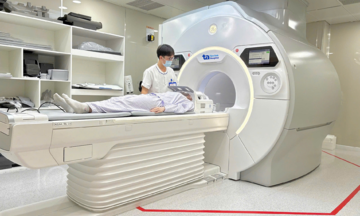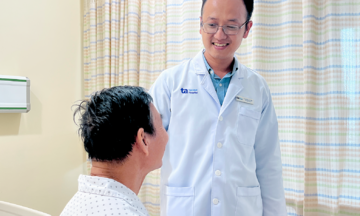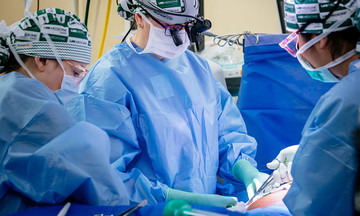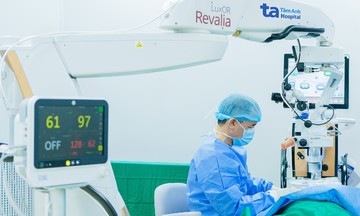These figures were released on 8/9 at the launch of the 2025 National Press Award on HIV/AIDS, organized by the Department of Preventive Medicine (Ministry of Health) in collaboration with the newspaper Suc khoe va Doi song. According to the Ministry of Health, over 10,000 new cases were detected in 2019, and the average has been over 13,000 per year since 2020. In 2024, there were 13,351 new HIV cases and 1,905 deaths due to the disease.
Since the first case was detected in Ho Chi Minh City in 1990, an estimated 267,000 people are currently living with HIV in Vietnam. Every province and city in the country has reported cases.
HIV transmission patterns have shifted significantly since 2010. The proportion of new infections through blood transfusions has dropped from 47% in 2010 to 6.5%. Meanwhile, sexual transmission has become the primary route, increasing from 47% to 70%. Men who have sex with men (MSM) are considered the primary risk group for HIV in Vietnam.
Dr. Hoang Minh Duc, Director of the Department of Preventive Medicine, Ministry of Health, acknowledges that stigma and discrimination against people living with HIV persist, and public understanding of HIV/AIDS remains limited. This creates barriers to accessing prevention and treatment services for those infected and high-risk groups.
"Combating HIV/AIDS is not merely a fight against a virus, but a fight against fear, stigma, and neglect. It's a fight not only for lives but also for the dignity and future of hundreds of thousands of people," Dr. Duc stated, adding that true victory over HIV comes when everyone understands the disease, no one fears testing, and people with HIV are welcomed, not shunned.
 |
Dr. Hoang Minh Duc, Director of the Department of Preventive Medicine, speaks at the event. Photo: Viet Ha |
Dr. Hoang Minh Duc, Director of the Department of Preventive Medicine, speaks at the event. Photo: Viet Ha
Journalist Tran Tuan Linh, Editor-in-Chief of Suc khoe va Doi song, noted that over the past decade, Vietnam has consistently reduced all three key indicators: new HIV infections, AIDS cases, and HIV/AIDS-related deaths. The country has also kept the HIV infection rate below 0.3%.
Furthermore, Vietnam has achieved "very impressive" results, according to Mr. Linh: 95% of people with HIV/AIDS have health insurance, nearly 90% of those receiving antiretroviral therapy (ART) have their treatment covered by health insurance, and over 95% of those on ART have achieved viral suppression. However, to reach the goal of ending the AIDS epidemic by 2030, Vietnam needs to intensify its efforts. The epidemic still poses a threat, especially among high-risk groups. New challenges demand new approaches and more innovative, robust communication solutions.
Experts recognize the foundation for ending the epidemic lies in ART, pre-exposure prophylaxis (PrEP), and a community free of stigma, enabling early detection, treatment with ART, and reduced transmission.
With early and consistent ART, viral loads in people living with HIV typically fall below detectable levels (200 copies/ml of blood) within six months. This prevents sexual transmission and reduces mother-to-child transmission. As a result, individuals with HIV can marry and have healthy children.
 |
A representative of a social organization in Dong Nai provides HIV/AIDS prevention services. Photo: Department of HIV/AIDS Prevention |
A representative of a social organization in Dong Nai provides HIV/AIDS prevention services. Photo: Department of HIV/AIDS Prevention
Le Nga












